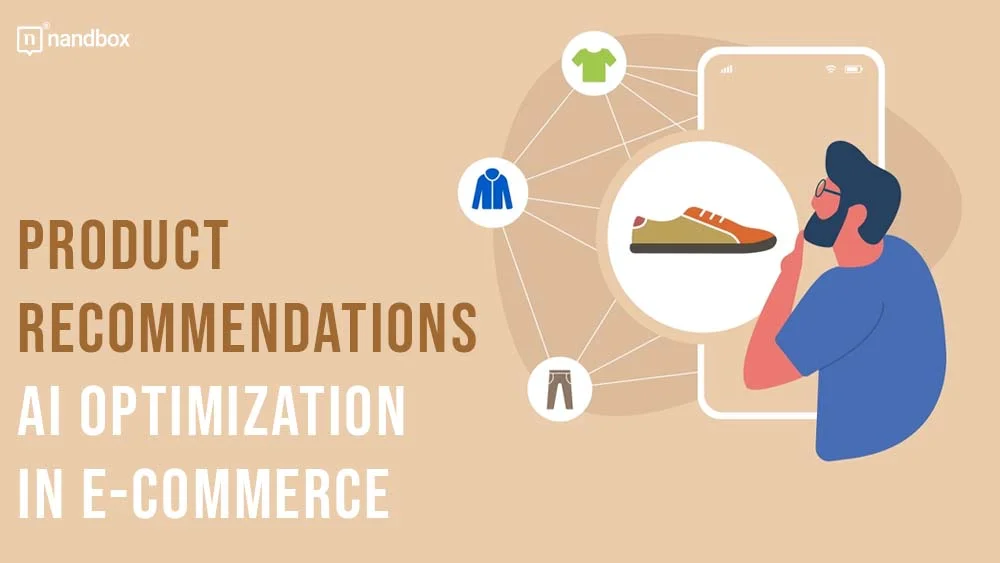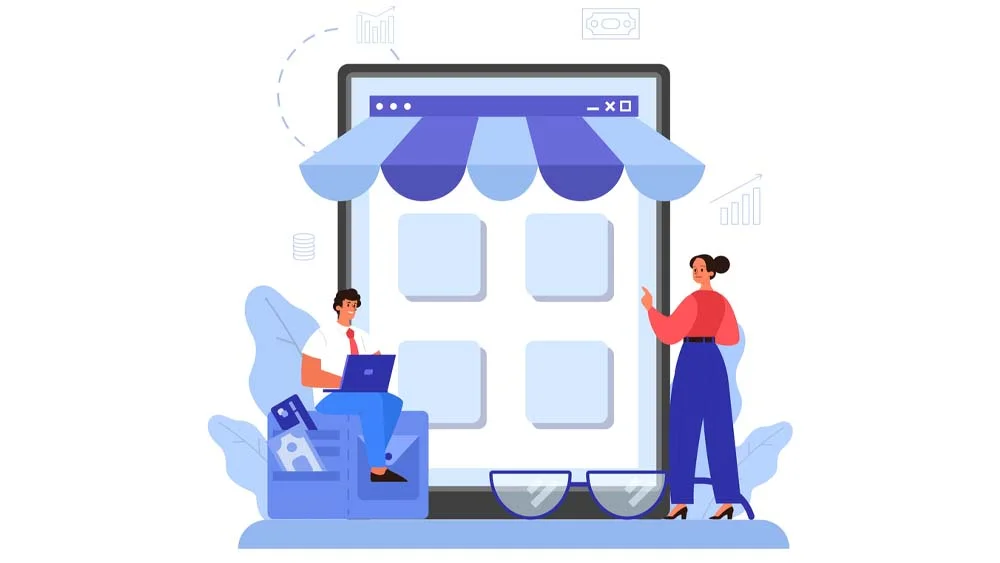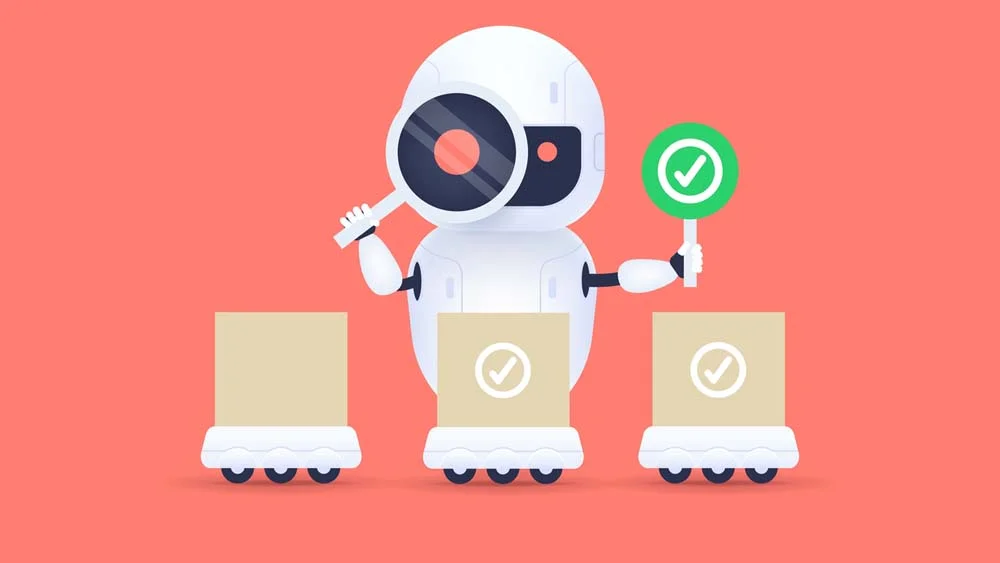No matter which field you’re in, product recommendations are key. They help us sort through the endless choices and find products we’ll actually enjoy. But now, it’s not just about seeing what’s trending or what other people are buying. Stores are using artificial intelligence (AI) to get to know you as a shopper. This tech looks at what you click on, the stuff you add to your cart, and what you end up buying, and then it suggests other things you might like. So, this will explain how it all works, why it’s changing the game for online stores, and how you can use this info to your advantage.
The Evolution of Product Recommendations
If you’ve ever bought something online and then seen a “You might also like…” section pop up, you’ve experienced a product recommendation system. These systems aren’t new — they’ve been around for a while, but they’ve come a long way since their early days.
Let’s take a look at how we got to where we are today.
Back in the early days of e-commerce, product recommendations were pretty simple. They often relied on basic rules, like “Customers who bought this also bought that” or “People who viewed this item also viewed.”
These recommendations were based on overall trends and weren’t very personalized. They were a good start, but they didn’t always hit the mark when it came to suggesting products you’d actually be interested in.
David Salib, CEO of MINVO, adds, “Early approach was collaborative filtering. This is where the system looks at what other people with similar purchase histories or browsing habits have liked and recommends those items to you. It’s a bit like asking your friends for recommendations, but with a much larger group of people.”
But now, enter artificial intelligence (AI). AI-powered recommendation engines have completely changed the game. They go beyond simple rules and look at a ton of data to understand your individual preferences and predict what you’re most likely to buy.
You might be thinking, how do they do it? Well, by analyzing your past purchases, browsing history, click patterns, and even the time of day you shop. Some advanced AI systems even look at things like your age, gender, and location to create a hyper-personalized shopping experience. The result? Product recommendations that actually make sense for you, leading to happier shoppers and more sales for businesses.
Now let’s take a look at the types of these AI algorithms.
Types of AI Algorithms
There are a few different types of AI algorithms that power these recommendation engines.
Content-Based Filtering
This type looks at the characteristics of products you’ve shown interest in before.
For example, if you’ve been browsing for running shoes, it might recommend other running shoes or related gear like socks or shorts.
Crate & Barrel, the home furnishings retailer, took this concept to the next level with their AI-powered recommendations. By analyzing customer browsing behavior and purchase history, they were able to offer personalized product suggestions throughout their website.
This meant that if you were looking at a dining table, you might also see recommendations for matching chairs, placemats, or even a stylish centerpiece.
This approach not only made it easier for customers to discover relevant items but also encouraged them to buy more. It’s a win-win situation — customers get a more tailored shopping experience, and Crate & Barrel sees an increase in sales and customer satisfaction.
Collaborative Filtering
This is where the system compares your behavior with that of other shoppers. If people who have similar tastes to you also bought a particular book or movie, the system might recommend it to you.
Hybrid Models
These combine both content-based and collaborative filtering to create even more personalized recommendations. They consider both the attributes of the products you like and the preferences of similar shoppers.
How AI-Powered Recommendations Work
Here’s how AI-powered recommendations work.
Data Collection
The first step is gathering information. This happens in a few ways.
- User Behavior Data: When you browse an online store, the system tracks what you click on, what you add to your cart, and what you ultimately buy. It might even look at how long you stay on a certain page or if you watch product videos, says David Martinez, VP Enterprise & OEM Accounts at Cybernet Manufacturing.
- Product Data: The system analyzes information about each product, like its category, brand, price, color, and any descriptive keywords or tags.
- Contextual Data: Some systems go even further, looking at things like your location, the device you’re using, and even the time of day you’re shopping.
Data Processing and Analysis
Once the data is collected, the real magic happens. Chase Hughes, Founder of ProAI, “AI algorithms can analyze a big mountain of information to find patterns and connections.” They look for things like.
- Which products are often bought together (e.g., people who buy hiking boots often buy hiking socks).
- Which products are similar to each other (e.g., different styles of shirts from the same brand).
- What types of products certain customers tend to prefer (e.g., people who like sci-fi books might also like fantasy books).
Soledad Galli, Founder of Train In Data, shares, “By analyzing this data, the AI system can start to build a profile of your individual preferences and predict what you might be interested in buying next.”
Recommendation Generation
Based on all this analysis, the system generates a list of recommended products just for you. This usually happens in real-time, so the recommendations you see can change as you browse and interact with the website.
The system also filters out products you’ve already purchased or viewed, ensuring the recommendations stay fresh and relevant.
La Redoute, a French fashion retailer, experienced this firsthand. They used an AI-powered recommendation engine to personalize the shopping journey for each customer, suggesting items based on browsing history, purchase history, and individual preferences.
These tailored recommendations were displayed on product pages, the homepage, and even in targeted email campaigns. And the results were unpredictable. La Redoute saw a 7% increase in overall sales, 9% incremental, 57% new customer rate, and online traffic, and 30% less COS compared to other acquisition solutions.
Continuous Learning and Improvement
One of the coolest things about AI is that it’s learning and improving. Every time you click on a recommendation, add a product to your cart, or make a purchase, the system takes note. It uses this feedback to refine its algorithms and make even better predictions in the future, adds Martin Seeley, CEO of Mattress Next Day.
So, in a way, the more you shop, the smarter your recommendations become!
Benefits of AI-Powered Recommendations
It’s easy to see why AI-powered recommendations are becoming the norm in e-commerce. The integration of AI in ecommerce is transforming the way businesses engage with their customers and tailor their shopping experiences.
They offer a whole bunch of perks for both the people shopping and the businesses selling the goods.
Let’s get into the benefits for everyone involved.
For Shoppers
Ever wished you had a personal shopper who could sift through thousands of products and pick out the ones you’d actually love? Well, AI recommendations are the next best thing. They take the guesswork out of online shopping.
- Saving Time: No more endless scrolling! Robbin Schuchmann, Co-Founder of Employ Borderless, adds, “AI quickly narrows down the options and presents you with items that match your taste.”
- Discovering New Favorites: You stumble upon products you wouldn’t have found on your own, expanding your horizons and introducing you to new brands or categories.
- Getting Personalized Deals: Some systems can even recommend items that are on sale or offer personalized discounts based on your purchase history.
- Feeling Understood: When a website seems to “get” your style or interests, it creates a more enjoyable and personalized shopping experience, said Ira Prevalova, Growth Marketing Director at Adverity.
For E-commerce Businesses
For online stores, AI-powered recommendations are like having a secret weapon. They can seriously amp up your sales and improve customer loyalty by.
- Increasing Conversions: When you show people products they’re actually interested in, they’re much more likely to buy. This means more sales for you!
- Bumping Up Order Values: By suggesting related or complementary items, you can encourage customers to add more to their carts, leading to higher average order values, shares Alison Lancaster, CEO of Pressat.co.uk.
- Keeping Customers Coming Back: A personalized shopping experience makes customers feel valued and understood. This leads to repeat business and a loyal following.
- Moving Inventory: If you have slow-moving or overstocked items, AI recommendations can help you put them in front of the right people, clearing out your warehouse and boosting sales.
But it’s not just about sales.
AI-powered recommendations go beyond just boosting revenue. They can also help you.
- Understand Your Customers Better: By analyzing the data from your recommendation engine, you can gain valuable insights into your customers’ preferences, shopping habits, and what makes them tick.
- Improve Your Product Offerings: Use this data to make smarter decisions about what products to stock, how to price them, and how to market them.
- Enhance the Overall Shopping Experience: When people have a positive, personalized experience on your website, they’re more likely to become loyal customers and recommend your store to others.
Sumeer Kaur, Founder of Anarkali, shares, “It’s clear that AI-powered recommendations are a win-win for both shoppers and businesses. They make shopping more enjoyable and efficient for customers, while helping businesses increase sales and foster loyalty.”
Getting the Most Out of AI-Powered Recommendations
AI tools are not magic. To get the best results from your recommendation engine, you need a smart strategy and a willingness to fine-tune things along the way.
Here’s your action plan for making AI recommendations work for your business:
Start with a Clear Strategy
Before you even start tinkering with algorithms, take a step back and think about what you want to achieve with your recommendations.
- Do you want to increase sales for a specific product line?
- Boost average order value?
- Reduce cart abandonment?
Dan Tabaran, Head of Marketing at Influencity, adds, “Having clear goals will guide your decision-making and help you measure success later on.”
Data is Everything
Your AI system is only as smart as the data you give it. Make sure the information about your products is accurate, complete, and up-to-date. This means accurate product descriptions, clear categories, high-quality images, and any other relevant details.
The same goes for customer data. The more you know about your customers — their purchase history, browsing behavior, demographics—the better the AI can tailor recommendations to their individual preferences.
Alex Taylor, Head of Marketing at Digital Signage New York, advised, “If you have a loyalty program or collect customer feedback, use that data to refine your AI’s understanding of your audience.”
Experiment
There’s no one-size-fits-all approach to AI recommendations. Different algorithms and strategies work better for different businesses. Don’t be afraid to experiment!
Try different types of recommendations, placements on your website, and even different providers if you’re using a third-party tool. The key is to test, measure your results, and keep iterating until you find what works best for you.
Balance Personalization and Discovery
While personalized recommendations are great, you don’t want to trap your customers in a bubble of familiar products.
It’s best to strike a balance between showing them items they’re likely to love based on their past behavior and introducing them to new products they might not have discovered otherwise.
You can do this by mixing different types of recommendations.
For example, you could have a “Recommended for You” section based on their browsing history, alongside a “New Arrivals” or “Trending Now” section to showcase fresh items.
Don’t Forget Your Other Marketing Tools
AI-powered recommendations are just one piece of your marketing toolkit. Don’t forget to integrate them with your other efforts.
For example, you could use email marketing to send personalized product recommendations to your subscribers or leverage social media to showcase user-generated content featuring your recommended products.
Noam Friedman, CMO of Tradeit.gg, says, “By creating a cohesive marketing strategy, you can amplify the impact of your AI recommendations.”
Monitor and Optimize Regularly
Your AI recommendation system isn’t a “set it and forget it” solution. Regularly check in on its performance, analyze the data it’s generating, and make adjustments as needed.
Keep track of metrics like click-through rates, conversion rates, and average order value to see what’s working and what’s not.
How to Implement AI-Powered Recommendations
Here’s how you can implement AI-powered recommendations.
Choose the Right Platform
There are two main paths you can take.
E-commerce Platforms with Built-In Recommendations
Many popular platforms like Shopify, Magento, and BigCommerce come with built-in recommendation engines. These are often easy to set up and use, making them a good option for beginners or those who want a more streamlined approach.
However, they might not be as customizable or powerful as some third-party solutions.
Third-Party Recommendation Solutions
While your e-commerce platform likely offers basic product recommendation features, sometimes you need a bit more horsepower. That’s where specialized platforms like Nosto, Barilliance, or Clerk.io come in. These tools offer advanced features and customization options to help you fine-tune your recommendations.
They often integrate seamlessly with your existing platform, but they might require a bit more technical setup and can be pricier.
Think of it like Amazon. They have a massive catalog of products, and helping customers find what they want is crucial.
Their solution?
An AI-powered recommendation engine that analyzes customer data like purchase history and browsing behavior to offer personalized suggestions. This sophisticated system has been a major contributor to their success, with an estimated 35% of their revenue coming from these recommendations.
So, when choosing a recommendation system, consider your budget, the size of your store, and the level of customization you need. If you’re not sure, take advantage of free trials offered by many providers to see what works best for your business.
With the right tool, you can unlock a new level of personalization that keeps your customers engaged and drives sales.
Integrating with Your Existing Systems
Once you’ve chosen your platform, it’s time to connect it with your existing systems. This usually involves integrating it with your.
- E-commerce Platform: This allows the recommendation engine to access your product data and customer purchase history.
- Product Catalog: If you have a large or complex product catalog, you might need to feed this data into the recommendation engine separately.
- Other Systems: Depending on the tool you choose, you might also want to integrate it with your email marketing platform, CRM, or other marketing tools.
The integration process varies depending on the platform and tool you choose. Some offer simple plugins or extensions, while others might require more technical setup.
Data Quality
Your AI recommendation system is only as good as the data it’s fed. Make sure your product data is accurate, complete, and up-to-date. This includes product descriptions, categories, images, and any other relevant attributes.
The same goes for your customer data. Khashayar Shahnazari, Chief Executive Officer at FinlyWealth, adds, “The more information you have about your customers’ preferences and behaviors, the better your recommendations will be.”
Test and Optimization
Like any aspect of digital marketing, AI recommendations require ongoing testing and optimization. Experiment with different algorithms and strategies to see what works best for your audience. This could involve.
- A/B testing different recommendation placements or formats.
- Trying out different recommendation types (e.g., “Customers who bought this also bought…” vs. “Recommended for You”).
- Adjusting the number of recommendations displayed on a page.
- Segmenting your audience and tailoring recommendations for different groups.
Final Thoughts
AI-powered product recommendations help us discover new products we love, save time, and make the whole experience more enjoyable. For businesses, these recommendations are a powerful tool for boosting sales and building customer loyalty, concludes Ben Ajenoui, CEO of SEO HERO.
As this technology keeps getting smarter, we can expect even more personalized and helpful suggestions in the future.
Whether you’re a customer who loves discovering new things or a business owner looking to up your sales game, AI-powered recommendations are definitely something to keep an eye on.






